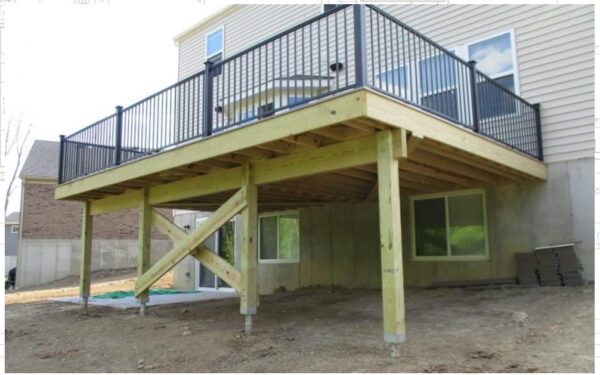Serving as robust structural supports worldwide, deep foundation pile systems allow transferring of superstructure loads through weak or unstable soils to reach stronger strata dozens of meters underground.
From skyscrapers to offshore platforms, many ambitious building projects rely on piles extending deep into the earth.
Engineers choose among numerous pile types and installation techniques like augured, drilled, and driven piles based on soil conditions and project demands.
Design requires analyzing pile capacity and load transfer as well as settlement potential.
While allowing impressive feats of engineering, piles also introduce complications like negative skin friction and lateral loading issues that must be addressed.
High-capacity steel driven piles enable towering urban structures and coastal wind turbines. Bored piles cut through soft soils to bear loads atop firmer strata.
Economical screw piles serve expanding residential needs.
From reinforcing unstable historic buildings to securing mighty bridges, deep foundation piles underpin many of civilization’s modern engineering marvels.
elements of deep foundation pile
Deep foundation piles are structural elements that transfer loads from a superstructure through weak or unstable soils to reach stronger and more stable strata at depth.
They are a critical component in the foundation design for tall buildings, bridges, offshore structures and other large constructions where shallow footings are inadequate.
A pile foundation typically consists of a series of long, slender, column-like structures embedded deep into the ground to reach stronger substrate layers.
Materials like concrete, steel, and timber serve as pile shafts that can withstand axial and lateral loading.
Structural pile caps tie multiple piles together, while pile points sharpen pile tips saving installation effort.
Clusters of piles then collectively transfer loads from columns, walls, and other structural building components further down in the earth.
Additional features like shear keys, spacers, and sleeves enhance specific pile performances.
Understanding what makes up these highly-engineered subterranean supports provides key insights for geotechnical pile design tailored to unique project needs from factories to high-rises.

How Do deep foundation Piles Work?
Piles are long, slender columns, typically made of materials like concrete, steel or timber that are inserted deep into the ground, sometimes up to 200 feet or more.
They work by supporting structure loads through skin friction along the pile shaft surface and also end-bearing resistance at the toe.
Groups of piles tied by a structural pile cap provide collective reinforcement to foundations.
In effect, piles provide an artificial strata of strong load-bearing soil below constructions built over loose silt, soft clay or other weak surfaces.
Main Classifications of Deep Foundation Piles
There are two major classifications used to categorize modern pile foundations – displacement piles and non-displacement piles.
Displacement piles literally displace soil during installation, causing it to compact around the perimeter.
These are further divided into driven piles (installed by hammering) and jacked piles (pressed into the soil).
Non-displacement piles minimize soil disturbance through pre-drilled holes which are then filled with concrete or rebar cages.
- Driven Piles: H-beam, sheet, tubular steel, precast concrete, timber
- Jacked Piles: Reinforced concrete
- Non-Displacement Piles: Cast-in-place concrete, auger-cast, grouted micropiles
Pile Foundation Installation Methods
There are several techniques used to install deep pile foundations to design depths safely and efficiently:
- Pile Driving: Hammering or vibrating steel piles using piledriving equipment
- Drilled Shafts: Excavating then filling holes with concrete and rebar
- Augering: Rotating hollow stem augers filled with concrete
- Jacked Piles: Hydraulically pressing reinforced concrete piles

Key Design Considerations and Analysis
Professional engineers conduct extensive soil analysis and design procedures to ensure pile systems provide adequate capacity, stability and settlement performance.
This includes determining appropriate pile dimensions, depth, material specs and installation methods per the loading conditions.
Design considerations include:
- Axial and Lateral Loading Capacity
- Uplift Resistance
- Shear Forces
- Allowable Settlements
- Negative Skin Friction
- Helical Piles for Compressible Soils
- Batter Piles Resisting Lateral Loads
- Structural Analysis of Pile Caps
- Field Testing of Installed Piles
Applications Across Infrastructure Projects
From a soaring high-rise to an expansive bridge, deep foundation piles enable impressive feats of modern engineering and construction by providing reinforced subsurface support:
- High Rises & Commercial Buildings
- Bridges Over Water & Land
- Onshore & Offshore Wind Infrastructure
- Oil & Gas Platforms
- Deep Excavation Shoring Walls
- Underpinning Historically Significant Structures
- Coastal Resiliency Structures
- Heavy Industrial Plants
- LNG Terminals, Storage Facilities
Continued Innovation in Deep Foundation Piles
Ongoing advances look to improve efficiency, cost-effectiveness and versatility of piles for changing infrastructure needs.
Optimized composite piles, cast-in-steel-shell techniques, helical piles with torque or impact drivers and sustainable materials present some evolving areas.
Continued civil engineering innovation with deep foundation piles ensures stable support for society’s most ambitious structural undertakings.







